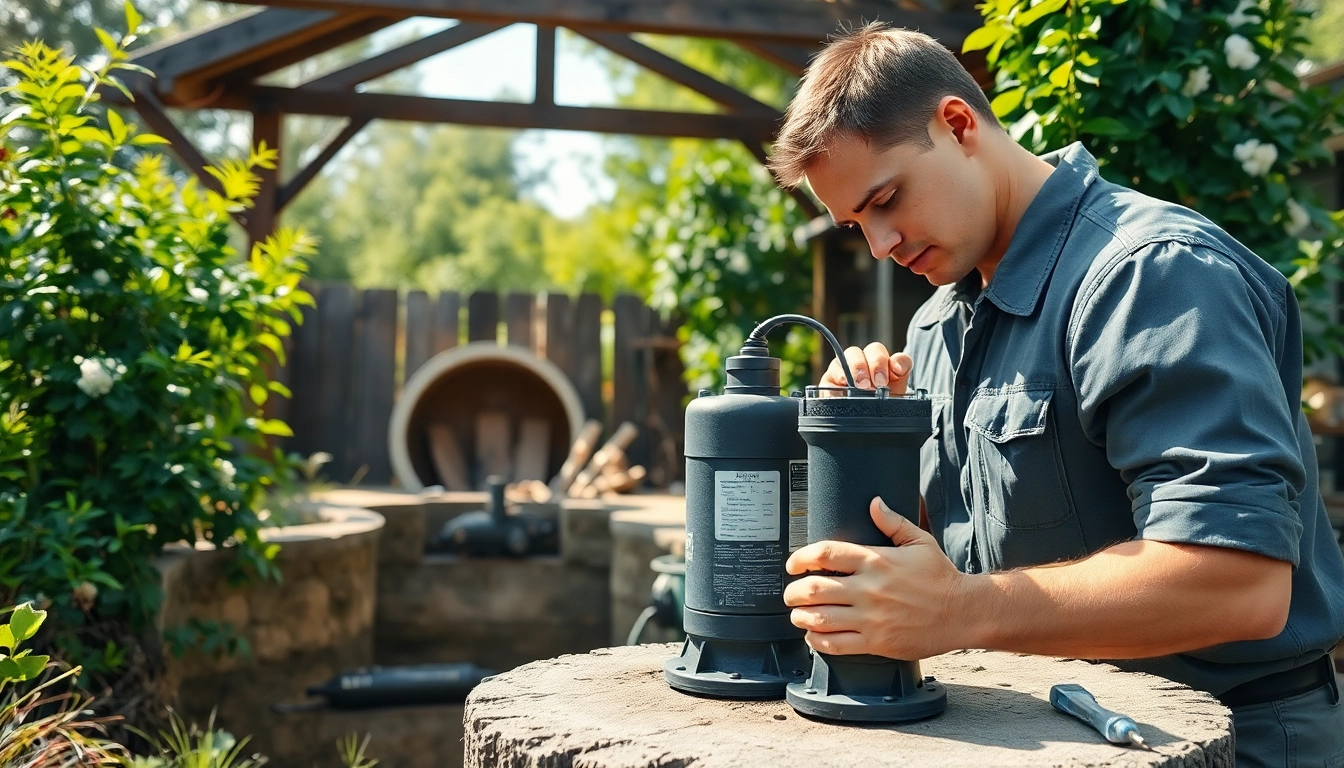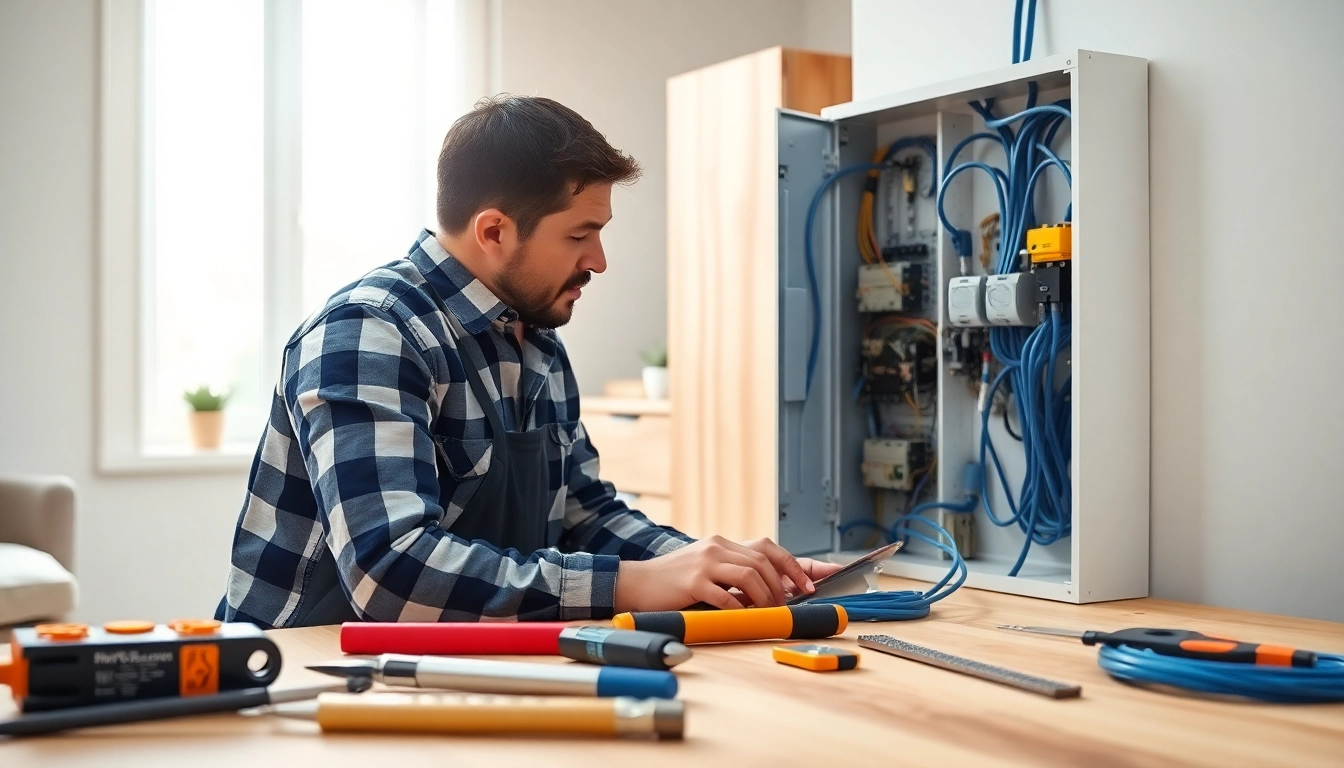Understanding Well Pump Replacement
Replacing a well pump is a significant task for homeowners relying on well water systems. It’s essential to understand the factors involved in a well pump replacement to ensure a smooth transition to a new system. Whether you’re experiencing issues with your current pump or simply planning for future maintenance, knowledge of the process and preparation steps can save you time and money. If you find yourself in need of assistance with well pump replacement, this guide will provide comprehensive insights into the process, costs, and best practices.
What is a Well Pump?
A well pump is a critical component in a water well system, responsible for moving water from underground aquifers to the surface for use in homes and businesses. There are two primary types of well pumps: submersible pumps and jet pumps. Submersible pumps are located below the water level and are designed to push water up to the surface, while jet pumps are installed above ground and rely on suction to bring water up from the well.
Submersible pumps are typically more energy-efficient and have a longer lifespan than jet pumps, making them a preferred choice for deeper wells. Understanding the type and functionality of your well pump is crucial when considering a replacement.
Signs You Need a Well Pump Replacement
Recognizing the signs that indicate a well pump replacement is necessary can help prevent more costly repairs down the line. Some common indicators include:
- Decreased Water Pressure: If you notice a significant drop in water pressure, it may suggest that the pump is failing to provide adequate flow.
- No Water Flow: A complete lack of water coming from the taps may indicate a pump failure.
- Strange Noises: Unusual sounds, such as grinding or rattling, can be a sign of mechanical issues within the pump.
- Frequent Cycling: If your pump turns on and off frequently, it might be working harder than it should, leading to potential burnout.
- Age of the Pump: Many well pumps have a lifespan of 10 to 15 years. If your pump is approaching this age, it may be prudent to consider replacement.
The Importance of Regular Maintenance
Regular maintenance is key to prolonging the life of your well pump and ensuring optimal performance. Routine checks can mitigate minor issues before they escalate into major problems, thus avoiding unexpected costs associated with emergency replacements. Seasonal inspections can include:
- Testing water quality for contaminants
- Checking electrical connections and wiring
- Inspecting the well cover and casing for damage
- Monitoring water levels and pump performance
By being proactive with maintenance, homeowners can maximize the longevity and efficiency of their well pump systems.
Preparing for Well Pump Replacement
Assessing Your Current Well System
Before proceeding with a replacement, it’s crucial to assess the current setup thoroughly. Understanding the specific configuration of your well, including its depth and the existing pump’s specifications, can inform your purchasing decision for a new pump. Key considerations include:
- The type of well (drilled, bored, or dug)
- Depth to the water table and total depth of the well
- The flow rate required for household demands
- Condition of existing plumbing and electrical systems
Choosing the Right Pump Type
Choosing the right pump type is essential for efficient operation and performance. The main pump types include:
- Submersible Pumps: Ideal for deep water wells, these pumps are energy-efficient and can handle varying flow rates.
- Jet Pumps: Best suited for shallow wells, jet pumps are easier to install but may require more maintenance.
- Hand Pumps: These are useful as backups in emergencies or for remote locations.
Consulting with a professional can help you select the most suitable pump type based on your well’s characteristics and your specific water needs.
Tools and Equipment Needed
Before starting the replacement process, gather the necessary tools and equipment. Common items needed include:
- Pipe wrenches
- Adjustable wrenches
- PVC and hose cutters
- Power drill and bits
- Safety gear (gloves, goggles)
- Water level tape
Having these tools ready will streamline the replacement process and ensure safety throughout the operation.
Cost Factors in Well Pump Replacement
Labor Costs Explained
Labor costs can vary significantly based on location, the complexity of the installation, and the experience of the technician. Hiring a well service professional can cost anywhere from $50 to $150 per hour. Factors contributing to labor costs include:
- The time required for installation
- Accessibility of the well site
- Local labor rates
Understanding these aspects can help in budgeting for the replacement project.
Material and Pump Costs Overview
The cost of materials and the chosen pump can significantly impact the overall budget. On average, well pump replacements can range from $1,000 to $6,000, depending on the pump type and required materials. Considerations include:
- Quality and efficiency ratings of the pump
- Additional components, such as pressure tanks or control systems
- Transportation and disposal fees for the old pump
It’s advisable to obtain quotes from multiple suppliers to ensure competitive pricing on necessary parts.
DIY vs. Professional Installation Costs
While a DIY installation may save money, it requires a certain level of expertise and understanding of plumbing and electrical systems. For those comfortable with such tasks, DIY costs typically involve materials only. However, if mistakes are made, the costs can escalate quickly due to potential damages. Here are some considerations when deciding:
- Expertise Required: Do you have the necessary skills to handle possible complications during installation?
- Time Investment: Are you willing to invest the time needed to ensure a proper installation?
- Long-Term Cost: A poorly installed pump can lead to future repairs and replacements, negating any savings from a DIY approach.
In many cases, hiring a professional guarantees the job is done correctly and efficiently.
Steps to Successfully Replace Your Well Pump
Shutting Off Power and Water Supply
Safety is the top priority before initiating any replacement work. Begin by shutting off power to the well pump and closing the main water supply valve to prevent accidental contamination and electrical hazards. Use circuit breakers to cut power and ensure no one else inadvertently turns it back on during the process.
Removing the Old Pump
The next step is to carefully remove the old pump from the well. This process generally involves:
- Disconnecting the piping and electrical connections
- Using a hoist or winch to pull the pump out safely
- Inspecting the old pump for signs of failure or wear for diagnostic purposes
Take care to note how the previous system was configured to assist in the installation of the new pump.
Installing the New Pump
Once the old pump is removed, it’s time to install the new unit. Steps include:
- Positioning the new pump correctly in the well
- Reconnecting the necessary piping and electrical connections
- Testing the system for leaks and proper water flow before sealing everything
Make sure to follow the manufacturer’s specifications for installation to ensure optimal performance.
Post-Replacement Considerations
Testing and Monitoring System Performance
After the installation, it’s vital to thoroughly test the new pump system. This includes:
- Turning the power back on and checking for any issues in operation
- Testing the water flow rate and pressure
- Listening for any unusual sounds that could indicate a problem
Monitor the system’s performance over the first few weeks, observing for consistent water delivery and stability in pressure.
Maintaining Your New Well Pump for Longevity
Once your new pump is operational, implementing a regular maintenance schedule is crucial. This can include:
- Changing filters as necessary
- Annual inspections by a qualified technician
- Monitoring water quality regularly
A well-maintained pump will significantly outlast one that is neglected, so invest in preventive care.
When to Call a Professional for Assistance
While DIY projects can be rewarding, there are instances where professional support is advisable. If you encounter issues during installation, lack specialized tools, or are unsure about electrical connections, it’s wise to enlist a licensed technician. Hiring a professional can provide peace of mind and ensure that your well pump replacement meets all local regulations and safety standards.
In conclusion, replacing a well pump entails understanding multiple factors, including the intricacies of your existing system, the type of pump required, and the associated costs. Proper preparation and maintenance not only ease the replacement process but also enhance the lifespan of your water supply system. With the outlined steps and considerations, you can approach your well pump replacement confidently and effectively.



